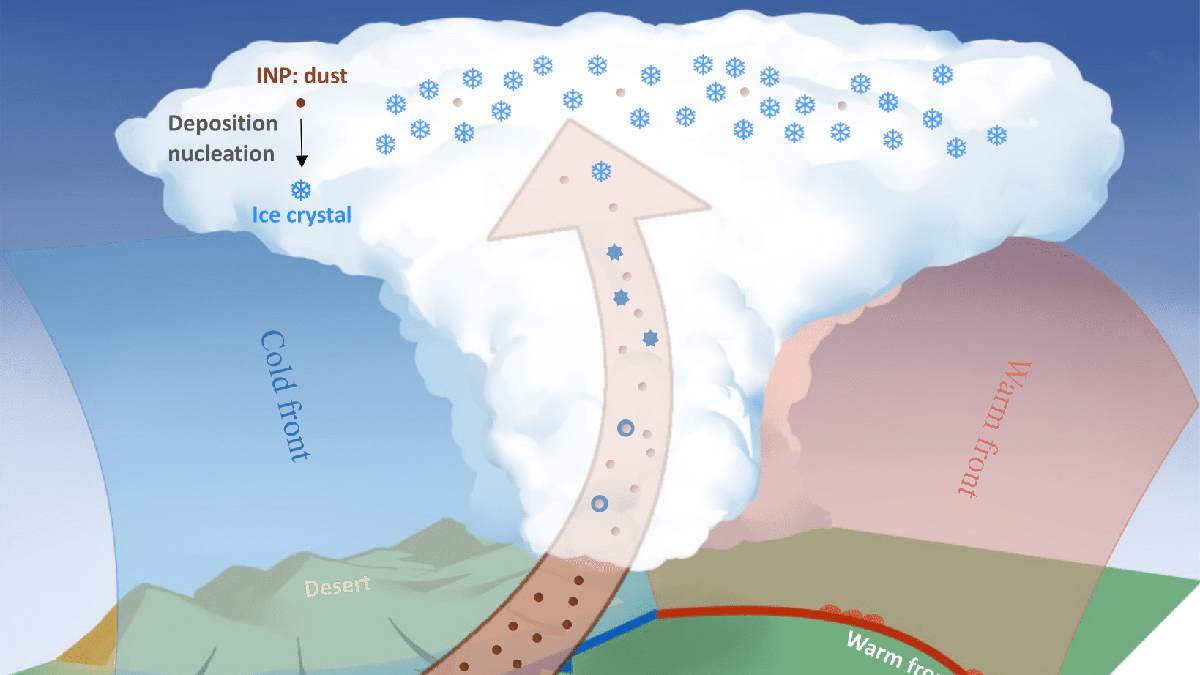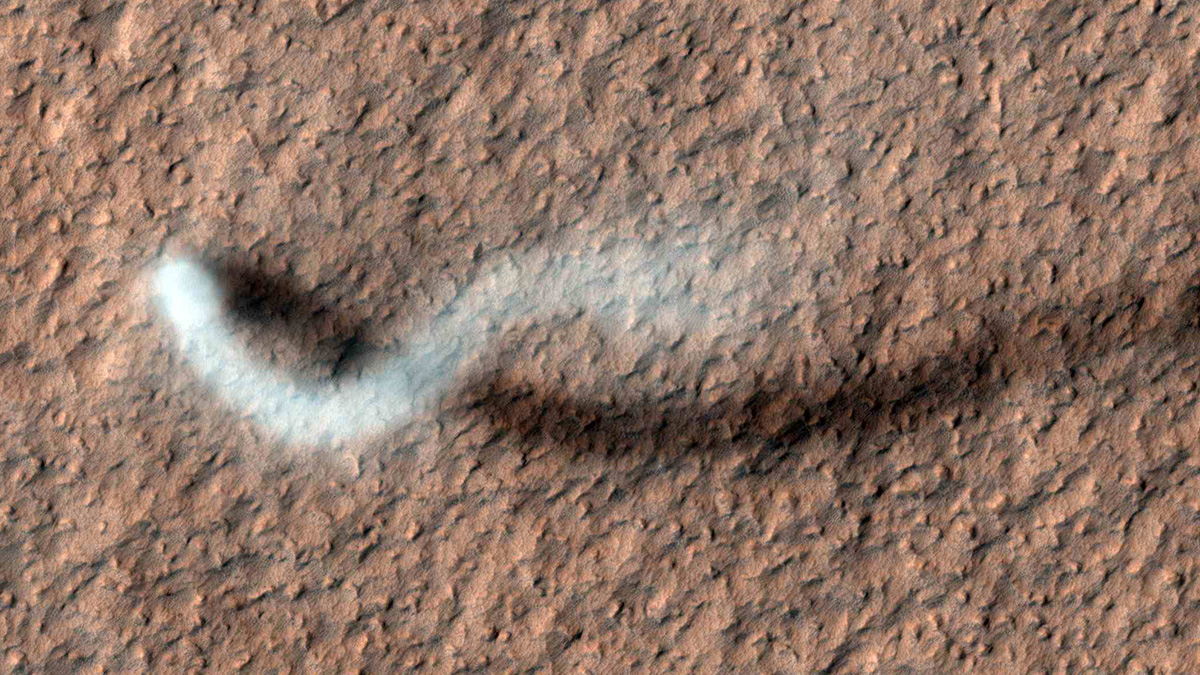Scientists are coming up with ingenious ways to compare terrestrial sand dunes, dust storms, and rain with their counterparts on Mars and Titan.
dust
Danger in the Dust! The Hazards of Windblown Dust
Airborne dust not only causes disease, it also menaces transportation on land, sea, and air; disrupts renewable energy systems; transports pathogens and toxic substances; and poses many other hazards.
Climate Models Aren’t Dusty Enough
Mineral dust aloft in the atmosphere has a cooling effect not accounted for in current climate models.
How Kicked-Up Dust Forms Cirrus Clouds
Dust lifted into the air by cyclones provides anchor points for cloud-forming ice.
Dust on Mars? The Answer, My Friend, is Blowin’ in the Wind
The first flights of a helicopter on another planet are used to study dust lifting and mobilization in Jezero Crater, Mars.
Wind Could Power Future Settlements on Mars
Using a sophisticated global climate model adapted to Mars, space scientists explore the hidden potential of wind energy on the Red Planet.
NASA’s Perseverance Rover Records the First Sounds of a Dust Devil on Mars
In a stroke of luck, the SuperCam microphone on Perseverance was turned on the moment a dust devil swept directly over the rover.
When the Aral Sea Dried Up, Central Asia Became Dustier
Winds kick up large amounts of dust from the desert that has formed as the world’s fourth largest lake has disappeared, spreading it around the region and raising concerns about public health.










